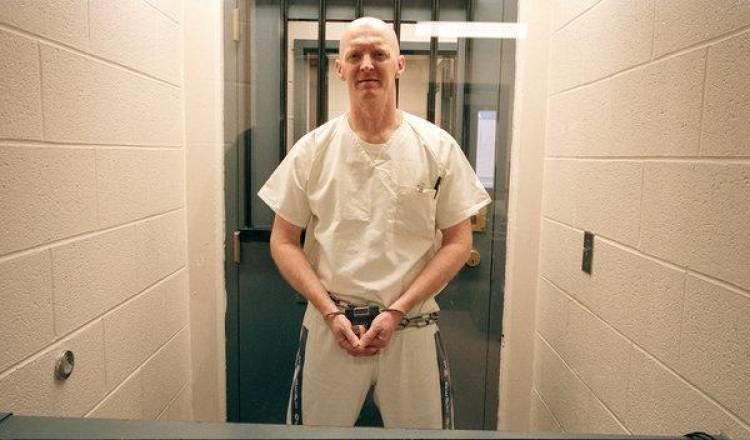
Holton, a Gulf War Veteran, was 36 years old when he shot his three young sons and their half-sister with a Chinese-made semi-automatic rifle on November 30, 1997, at the garage where he worked in Shelbyville, Tennessee. Holton was divorced, and his ex-wife had custody of the children. About an hour later, Holton turned himself in to the Shelbyville police; he told investigators that he had killed the children because "families should stay together; a father should be with his children." He said he had also planned to kill his ex-wife and then himself, but had changed his mind.
Holton chose to die in the electric chair, rather than by lethal injection, which is now the standard method of execution in Tennessee. Death-row inmates who committed their capital crime when the electric chair was still the official execution method are permitted to choose between the two methods. Holton was the first person to be executed by electrocution in Tennessee in 47 years. Moments before his execution, prison warden Ricky Bell asked Holton if he had any final words. He replied: "Two words: I do". He decided against the traditional special last meal before his execution and instead, ate the regular prison meal which consisted of riblets on a bun, mixed vegetables, baked beans, white cake with white icing and iced tea.
Chefs made their way into celebrity land a while ago. But how many celebrities that weren’t trained as professional cooks are actually whizzes in the kitchen? Here are several that come to mind.
Actress Julia Roberts is confident about her cooking skills. “I’m quite a good cook,” she told E! News. “I’m like a closet home ec teacher…I can really cook anything.” Roberts has said she often cooks fish for herself and her kids. And speaking of her three children, “They think that I’m a good cook,” Roberts told People. “They actually told me that I should open a restaurant.” She also relishes cooking for the holidays, particularly shredded Brussel sprouts. Roberts hasn’t published a cookbook, but we did find recipes attributed to her for peach crisp and banana hemp muffins. Or you can make the same summer salad the actress supposedly eats.
Chrissy Teigen started off as a supermodel. Then her love of cooking filtered into her professional life too. At this point, she’s created recipes for a limited Blue Apron release and also just launched her own home and cooking line at Target named “Cravings,” after the two cookbooks she’s released. Teigen describes cooking as “a time of peace” for herself. So maybe peace out to her tuna melt sandwich or the fried chicken wings that are a favorite of her husband, John Legend.
Lady Gaga, whose real name is Stefani Joanne Angelina Germanotta, comes from a cooking Italian family. Her father started his own restaurant in New York and also published a cookbook. And apparently, Lady Gaga has inherited the family’s cooking genes. Her Instagram account occasionally features photos of her culinary activities. Sure, sometimes it’s topless cooking. But other times it’s more poignant like in the post she shared about her bringing food to the family of her dear friend who passed away. Want to try a Gaga/Germanotta family favorite? Check out her recipe for whole wheat pasta with a sweet fennel sauce.